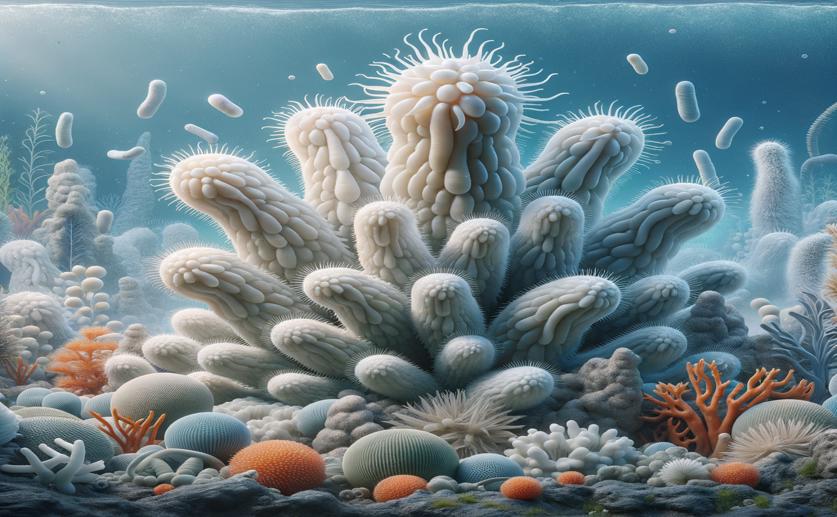Exploring the Genetic Diversity of White Sea Cucumbers

Image Source: Natural Science News, 2024
Key Findings
- In Kenya, the white teatfish shows high genetic diversity despite heavy fishing
- The study found 30 different genetic versions (haplotypes) of a key gene
- More research is needed to confirm these findings and guide conservation efforts
Understanding the genetic diversity of marine species is critical for their conservation and management, especially for those that are heavily exploited. The white teatfish, Holothuria fuscogilva, is one such species. Found in the Indo-Pacific, this sea cucumber is a valuable commodity in the global seafood market. In Kenya, it is harvested along the south coast, but until recently, the genetic makeup of its populations under the strain of fishing pressures remained unexamined.
Researchers from Pwani University have taken a significant step in addressing this gap[1]. They focused on the genetic diversity and structure of H. fuscogilva populations by sampling individuals from three sites along the Kenyan south coast. To understand the genetic diversity, they looked at the mitochondrial cytochrome oxidase subunit I (COI) gene sequences. Mitochondrial DNA, which is inherited from the mother, can provide insights into the historical patterns of population structure and dynamics.
The study revealed 30 different haplotypes, which are distinct versions of the COI gene, and 43 polymorphic sites, which are positions in the gene where the genetic code varies among individuals. This variation is crucial as it can indicate how genetically diverse a population is. The results showed high haplotype diversity (h = 0.970 ± 0.013) and low nucleotide diversity (π = 0.010 ± 0.001). High haplotype diversity often suggests a large and healthy population with a rich genetic background, while low nucleotide diversity can indicate a recent population expansion or selective sweeps, where certain genetic variants become more common due to advantageous traits.
These findings suggest that despite heavy exploitation, the white teatfish populations in Kenya might be genetically diverse. However, this is an initial study, and the researchers call for more comprehensive studies to confirm these results and guide sustainable exploitation and management strategies.
Incorporating earlier research, such as the study on Cape hakes[2], we see parallels in the need for understanding genetic structures to manage fish populations effectively. In the case of Cape hakes, environmental factors like bathymetry and upwelling events were found to influence genetic differentiation. Similarly, the environmental gradients in coastal Kenya could be impacting the genetic makeup of H. fuscogilva, though further research would be needed to confirm this.
Another relevant study addressed the decline in sea cucumber fisheries and the rise of aquaculture as a means to supplement wild stocks[3]. The promotion of sandfish farming as a community livelihood in the Western Indian Ocean, including Kenya, underlines the importance of genetic studies like the one conducted by Pwani University. Understanding the genetic diversity of wild populations is crucial before starting aquaculture projects to ensure the farmed stocks are genetically representative and to avoid potential negative impacts on wild populations.
Lastly, the study on Holothuria polii in coastal lagoons[4] showed how environmental conditions could lead to genetic divergence. While this study focused on a different species and habitat, it raises the possibility that similar processes could be at work in the coastal populations of H. fuscogilva.
The research by Pwani University is a stepping stone towards a more nuanced understanding of the genetic landscape of exploited marine species like the white teatfish. It underscores the importance of genetic monitoring in fisheries management and conservation, offering a tool to assess the resilience of populations to exploitation and environmental changes. As the demand for sea cucumbers on the global market persists, such studies are essential to ensure these creatures are around for generations to come.
GeneticsMarine BiologyEvolution
References
Main Study
1) A peek into the population genetics of white teatfish (Holothuria fuscogilva) of Kenya's south coast.
Published 8th March, 2024
Journal: Molecular biology reports
Issue: Vol 51, Issue 1, Mar 2024
Related Studies
Related Articles





 9th March, 2024 | Jim Crocker
9th March, 2024 | Jim Crocker